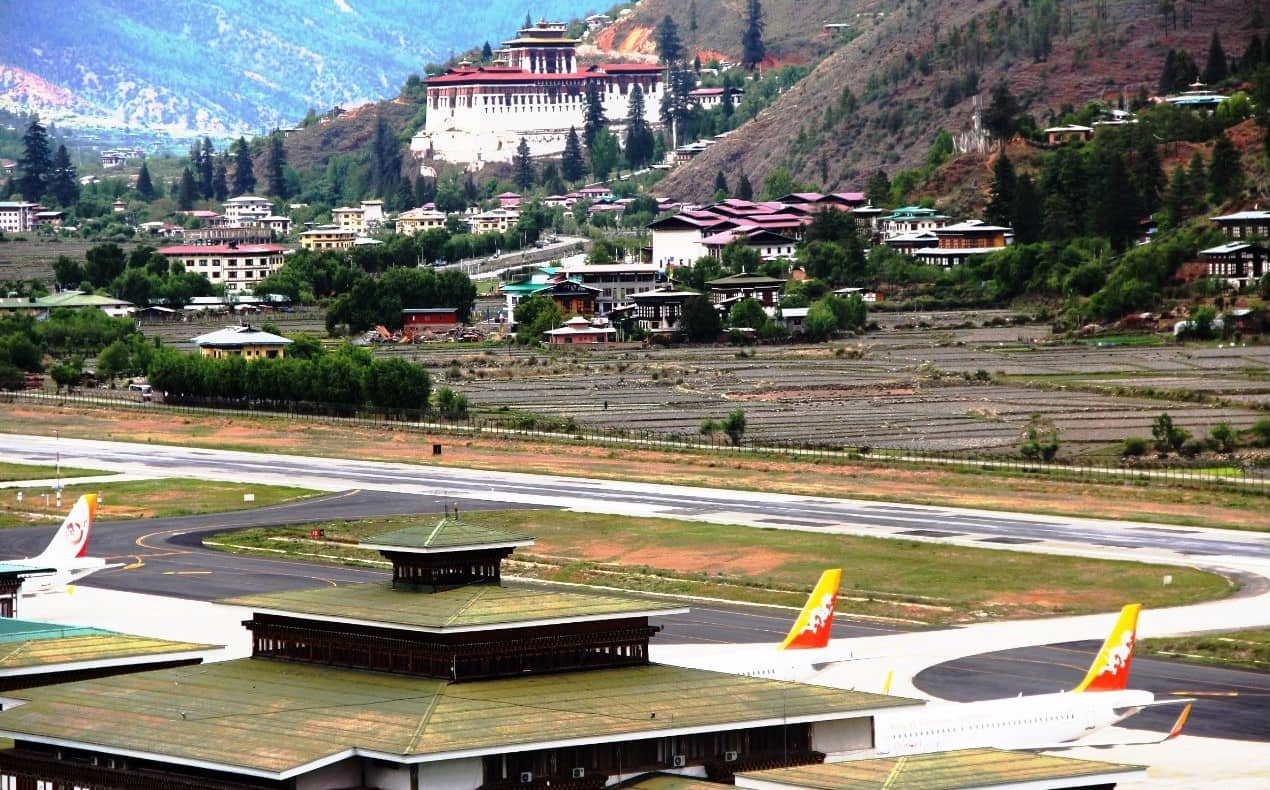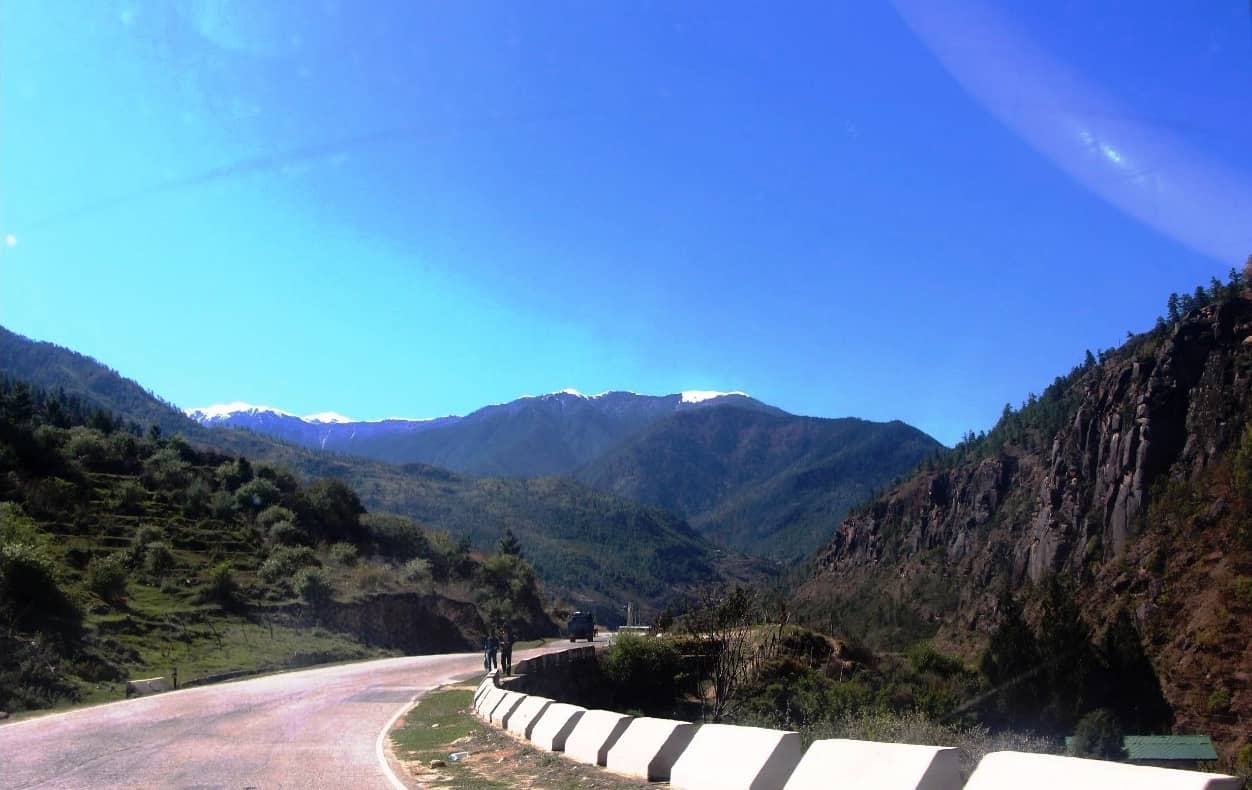“High Value, Low Volume” Tourism Policy
The Daily Tax/Sustainable Development Fee (S.D.F USD 200) per night per person for all seasons is been imposed from 20 June 2022. This amount is been set to maintain Bhutan as carbon negative and to uplift economic development. As the S.D.F mostly goes to free health and education, and then for the sustainable development of the country. The Bhutan Visa Fee is USD 40 per person per entry only.
However, we can offer some discount on the Daily Costs. And the normal cost includes; 3-star hotel accommodations with 3 meals, tea/coffee, snacks, comfortable internal transport, a guide, bottled drinking water, and necessary entry fees. Partner tour agents abroad will be entitled to 10 percent discounts.
So travelers to Bhutan do not just contribute to our economic growth only, yet it also protects people’s livelihood too. So it’s the second-largest industry in the kingdom after Hydro.
Entry and Exit by Air
Entry into or Exit from Bhutan at present by flight is normally the Paro airport only. We only have two Airlines in the country, the Drukair (Govt. airline) and Bhutan Airlines (Private airline). The Drukair operates the flight to and from Bangkok, Singapore, Delhi, Kolkata, Kathmandu, Bagdogra, and Guwahati. Yet, Bhutan Airlines operates to/from the above few places only. You could book these flights to and from Bhutan through us/at your end too.
Note: – The airfares are quite high compared to most airlines. And you must always keep ample time in-between your flight departure from Paro and onward international flights as at times the flight may be delayed to/from Bhutan.
And for those who wish to tour Eastern Bhutan, there is also an option to fly with our Bhutan flights to/from Guwahati Airport (one way only) through Assam in India as this airline is quite close to the Eastern part of our country.


Entry and Exit by Road
Entry and exit point by road are Phuentsholing through west Bengal– India with the nearest airport at Bagdogra and by air to Paro. The drive to/from between Phuentsholing (border) and capital, Thimphu/Paro airport will be around 5 hours, 160 km one way. So this road trip to and from Bhutan can be connected easily with a trip to the North Indian hill stations like Sikkim, Darjeeling, and Kalimpong.
Or you can fly via Guwahati Airport in India and then enter or drive to Samdrup Zongkhar, Bhutan via road in south-east Bhutan which is normally good only if you like to tour Eastern part or driving to the western part from the east which will minimum take about 11-12 days trip through the kingdom.
And we will always use comfortable transportation with skilled drivers based on your group sizes for your driving safely around the country.
Passport Validity
You must be in possession of passports with a minimum validity of 6 months from your date of travel. You must travel with the same passports, which you have provided us earlier for the process of your visa. If you travel with a new one, the number, which was there in your visa approval letter does not tally and will result in detention of your passport at the airport.

Accommodation/3 Star Hotels
We always offer our guests good 3 Star Hotels mostly with modern amenities and the best lodges that are certified by Tourism Council, at all tourist destinations. The western region has the best hotel options and central Bhutan also has really improved its hotel standard in the last couple of years while in eastern parts of the country, accommodation establishments are simple and offer minimum facilities. Few Luxury accommodations and 4/5 Star Hotels are now available in Paro, Thimphu, Punakha, Gangtey, and Bumthang. So we can arrange the semi-luxury or luxury tour by applying Supplement Cost on the kind of 4-5 star hotels or luxury resorts you like to book or upgrade for your trip through Bhutan.
Trekking & Tour seasons
Spring Season: March, April, and May (flower blooming time) has warm weather with mostly sunny days. Sometimes light rain could be expected between March-April end. May is much warmer with some flowers bloom which is the best month for high-altitude treks.
Autumn Season: September, October, and November (changing of forest colors). During these months the skies may be clear and you can catch a rare glimpse of the great Himalayan mountain ranges due to the great weather.
So the spring and fall seasons in Bhutan are the best seasons for all types of Tours and high altitude Trekking. Birding tours are good from March-May and September-mid to starting November also.
Winter Season: December, January, and February (not for high altitude treks). It’s still a good time to visit for cultural tours, day hikes, and low-altitude winter treks. Though it’s the winter season, yet the weather will be generally very good with clear blue skies for the vistas of snow-capped mountains. It will be dry sunny days with cold mornings and evenings. The lowest temperature in winter is around minus 1-2 Degree Celsius at night in most places. The high-altitude treks route will remain closed due to heavy snowfall and icy trails.
Summer monsoon season: June, July, and August. Being summer, these three months will experience some rainfall. Yet the rainfall is not that bad every time, so we do organize cultural tours with day hikes and short trekking too. Botanical tours will be very good during this season as we grow varied species of plants and flowers. Long treks may not be advisable during this time frame, yet 3-4 days treks are still good in the summer too. The mountain’s views are not that visible in the summer.

Time Zone
Bhutan is a tiny country that has only a one-time zone. The country’s Standard time is 6 hours ahead of Greenwich Mean Time (GMT), one hour behind Bangkok time, 30 minutes ahead of the Indian time, and 11 hours ahead of the standard New York time. Bhutan’s time matches with Bangladesh’s time.
Guides
All guides are licensed by the Tourism Council of Bhutan after training only. Our guides speak good English normally. French, Japanese, Chinese, Italian, and German-speaking guides can also be arranged at extra cost. And we carefully choose only skilled with a good attitude and knowledgeable guides for working with our guests. This’s one of the main services we focus on.
Women Travelers
Bhutan does not have a class system generally and gender equality is considered widely. So Bhutanese women have equal rights as men, for instance, rights at home to official works. Thus most of our Bhutanese women hold higher positions in the government, politics, or good business entrepreneurs. So there is no risk for women if any woman wishes to travel alone. In the case of the loving matter, women must make clear and frank views from the beginning if they come across a proposal. Otherwise, it’s safe even for a solo woman’s trip throughout the country.
Gay and Lesbian Travelers
We also welcome Gay and lesbian travelers. Like most Asian, Bhutanese also think that whatever that happens in their private area, and the one that emerges from the different cultural background is not the general concerns. So exposing your intimate relations in the public has to be controlled or it’s not good culturally. But just holding each other hands by the same gender while walking and hugging, may not be a bad thing. Even some of our people do hold each other hands sometimes just to show their love as a friend, brothers or sisters. This may be quite popular among Bhutanese teenage girls and boys also. LGBT’s rights is also been legalized by the National Assembly in 2019.
Foods
Bhutanese delicacies are rich in spicy chilies and cheese. Hotels and guest houses offer delicious Chinese, Continental, Bhutanese, and Indian cuisines as meal plans. We provide suitable dishes to western taste in the above range and every effort will be made to accommodate the individual dietary preferences of your own to trekking groups. Eating meals in local restaurants may not be good in some local restaurants. So we suggest, you choose a proper one through your guide if you like to taste the local cuisine. Otherwise, most of our Bhutanese dishes will be provided in your hotels also.
Language
Dzongkha, the Language of Dzong belongs to the Tibetan Linguistic family originally spoken in western Bhutan. It is now the National Language. And there are about 21 different local dialects spoken in the country. English is widely spoken in the main towns and it is the principal medium of instruction in schools throughout the kingdom.


